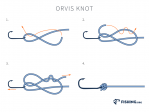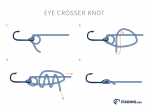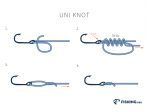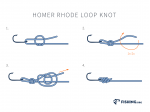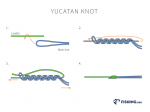Tying knots is one of the important things people who fish need to learn if they are going to be able to ready their lines securely and hooks. The Snell Knot -Traditional is a kind of knot that can be used for tying any kind of material and one that is commonly used for fishing lines. This is a knot used for attaching the hook securely to the fishing line when used for fishing rather than other types of line or rope attachments. Though, this is a knot that is not as easily tied as some other types of knots in its original form. Instead, some people opt to use the version of the knot named Uni Knot easier to tie, but the full Snell Knot -Traditional can be an advantage to learn since it is the knot that will attach the line to the hook.
This is one of the knots that any fisherman can learn to attach their hooks to any type of line if the right steps are taken to make this knot it can be secure enough to attach the hook for any kind of fishing large or small.
Snell Knot -Traditional

Snell Knot -Traditional
Step 1:
Holding the fishing hook and with the thumb and forefinger put the leader line in the eye of the hook.
Step 2:
After, the line is put through the eye of the needle with the barb of the hook facing away then form a loop with the line.
Step 3:
Then with the toward the barb of the hook facing away holding it with the thumb and forefinger start wrapping the line around the hook shank toward the hook barb. Hold each wrap in place when making the next wrap.
Step 4:
Continue this practice of wrapping the loop line for 7 or 8 wraps around the hook with the line. Make certain during this step the line is kept even as it will be important for the next step when tightening the Snell Knot.
Step 5:
Next holding the hook line wrap in place and then pull the leader line through the eye. This needs to be done slow and evenly. Do this until it is almost tight and then slide it against the eye while at the same time pulling the other end of the leader line with pliers. This will tighten the Snell Knot -Traditional completely and secure it to catch any type of fish.
Step 6:
 Joshua Keaton
Joshua Keaton 
